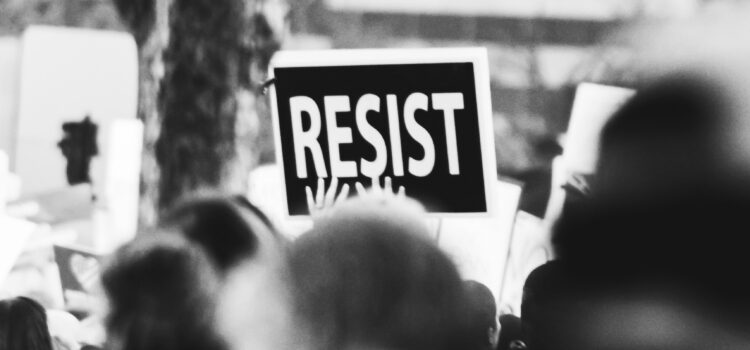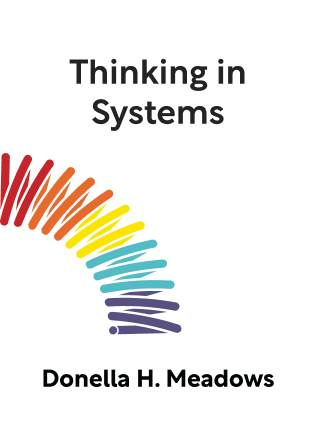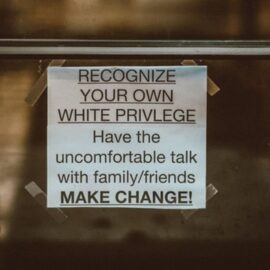

This article is an excerpt from the Shortform summary of "Thinking in Systems" by Donella H. Meadows. Shortform has the world's best summaries of books you should be reading.
Like this article? Sign up for a free trial here .
What is policy resistance and why does it happen? What happens when a system experiences policy resistance?
Policy resistance is a failure of policies to achieve the desired outcome. Policy resistance occurs when a system fails.
Read more about policy resistance below.
Policy Resistance
Policy resistance is the failure of policies to achieve the desired outcome. It occurs when the actors resist the policies placed on them. The situation seems to be stubbornly stuck, regardless of what policies are passed to solve the problem.
From a system point of view, policy resistance occurs because the actors in the system have personal goals that differ from the policy. Visualize it as multiple actors pulling the system stock toward opposing goals. Each actor has a desired setpoint for the stock, and the actor takes action when the stock differs from its personal goal. However, each actor has a different setpoint, so all the actors are trying to pull the stock in different directions.
Furthermore, like typical balancing feedback loops, each actor’s behavior is proportional to how far the stock is from the actor’s setpoint. The stronger one actor pulls the stock to its favored direction, the stronger the other actors try to pull back to the center. You might think of this like a game of tug of war.
The system state thus is pulled tightly in multiple directions by all the actors. But since the system stock isn’t at any one actor’s preferred setpoint, everyone is dissatisfied with the situation.
Examples of Policy Resistance
Here are some examples of policy resistance.
The War on Drugs
The war on drugs has multiple actors with different setpoints for the system stock of drug supply:
- Drug addicts want the drug supply high.
- Police want the drug supply low.
- Drug suppliers want the drug supply in the middle to stabilize prices.
- Most citizens who don’t use drugs just want to be safe and may not care about drug supply.
When one actor gains an advantage, the other actors pull the system back to where it was. For example, the police might increase border patrols to seize stockpiles of drugs. A number of events happen in sequence:
- The lower supply raises prices.
- Higher prices mean more profits for drug suppliers.
- The suppliers use the profits to buy planes to evade border patrols.
- The supply increases, drug prices lower, and drug use continues unabated.
Thus the setpoint is back to where it began, though now with actors pulling more tightly than before. Issuing additional policies will do little to change the situation.
Romania’s Abortion Problem
In the 1960s, the Romanian government, headed by dictator Nicolae Ceausescu, was worried about the country’s low birth rate, which would stagnate the economy. They decided to outlaw abortion and contraception for women under 45. However, the real underlying problem of low birth rates was that parents were too poor to raise more children, and they didn’t want more children to be born.
After abortion was outlawed, the birth rate tripled for a period of time, but then the population practiced policy resistance:
- Mothers began getting illegal abortions, which were dangerous and tripled deaths of pregnant women.
- Children that were born were abandoned.
The policy was so extreme that when the dictator’s government was overthrown, the head family was executed, and the first law passed was to reverse the ban on abortion.
Fixing Policy Resistance
Much of the reason that policy resistance occurs is that people are resisting the policy. Stronger policies cause stronger counterreactions.
The solution is counter-intuitive: give up. Cancel the policy. Things won’t get as bad as you think, because other actors behaved intensely only because you did.
- For example, when alcohol Prohibition in the United States ended in the 1930s, much of the violence and crime also ended.
The ideal solution is to develop a policy that aligns all actors’ goals and find a way to satisfy everyone. This stops the actors from pulling against each other and more toward the same goal.
- For example, like Romania, Sweden wanted to increase its population’s birth rate in the 1930s. But instead of outlawing abortion, they focused on the larger system goal of having children who were wanted and would be cared for. They made contraception widely available, improved health care, and made divorce easier. This aligned the population and government harmoniously in the same direction.

———End of Preview———
Like what you just read? Read the rest of the world's best summary of Donella H. Meadows's "Thinking in Systems" at Shortform .
Here's what you'll find in our full Thinking in Systems summary :
- How the world, from bathtub faucets to fish populations, can be seen as simple systems
- The key system traps that hold back progress, such as escalating arms races and policy addiction
- Why seeing the world as systems can give you superpowers in work and life






